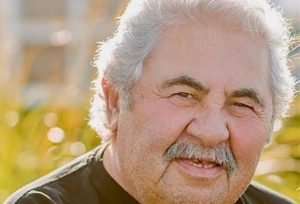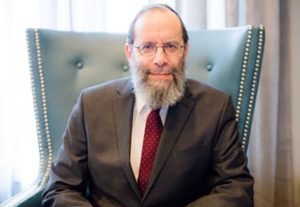Who among us has not marveled at the luminous paintings of the French impressionists? They revolutionized painting as a visual art form at the turn of the 20th century and their works today still remain among the most popular attractions at art galleries around the world.
One of the master impressionists was Camille Pissarro, considered to be among the movement’s founders. Renowned art historian E.H. Gombrich wrote of Pissarro that he was “one of the oldest and most methodical champions of the impressionist movement.” Pissarro’s radiant landscapes have been described as having “an unaffected naturalism.” He was supremely gifted.
In Art: A New History, Paul Johnson succinctly wrote of the talented artist: ”Pissarro was a Sephardi Jew from the West Indies who was self-taught but became extraordinarily adept at putting what he saw down on canvas, simply, sincerely and effectively and he tried to work out-of-doors right up to the finish. He was modest but with an inner self-confidence and authority which, in their own way, made him a formidable person and a fine teacher.”
READ: A SNAPSHOT OF A LOST PREWAR POLISH JEWISH COMMUNITY
In her most recent novel, The Marriage of Opposites, celebrated author Alice Hoffman writes about Pissarro’s life. But Pissarro is not the central character of the book. Indeed he does not arrive on the scene until the book’s midpoint. His mother Rachel Pomié Petit Pizzarro is the beating heart of The Marriage of Opposites.
Rachel’s defiant, passionate, resolute nature, as dramatically imagined by Hoffman, is the artistic springboard of the story. Through Rachel’s character, the author launches the reader into a brightly lit corridor that opens onto many connecting chambers dealing with art, religion, philosophy, history, polemics, family relations and individual human destiny.
The story begins on the island of St. Thomas in 1807, some 23 years before the future impressionist painter is born. We meet young Rachel whose relationship with her mother is deeply troubled. Their relationship deteriorates as Rachel blossoms into womanhood and her aspirations clash with her mother’s expectations.
Rachel’s connection with her father, however, is better. Out of an abiding sense of duty and loyalty to him, Rachel even agrees to a marriage he has arranged with a widowed father of three, in order to save the family’s failing business. Rachel’s sentiments were not a factor in her father’s calculations. But the marriage to Isaac Petit sets in motion a series of events that ultimately brings his nephew, Frederic Pizzarro, onto the island.
Rachel and Frederic meet and their worlds are forever altered. The two fall immediately in love. They marry despite the objections of family and community elders who shun the young couple with cold callousness for having violated the norms of traditional Jewish communal life on the island. Among Rachel and Frederic’s children is Jacobo Camille Pizzarro.
Marriage of Opposites is a captivating, thoughtful, provocative book.
The story is an entrancing narrative of many intersecting lines. We meet strong, robustly developed characters, all of whom directly or indirectly influence the unfolding drama of Rachel’s eventful life. And yet, the full extent of the inter-connections among them all is not revealed until very late in the novel. And we are surprised as well as delighted at these clever conclusions.
Like the artist whose life she describes and who layered myriad shades, tones, hues and textures of related colours, Hoffman also joins many diverse but related subjects on her literary canvas.
She explores the history of the persecuted Jews of Spain and Portugal who sought sanctuary from the Inquisition, even in the 18th century, as far away as the West Indies islands.
READ: AN IMAGINATIVE, MOVING PORTRAIT OF KING DAVID
Hoffman describes the severely structured lives the tiny Jewish minority lead on St. Thomas and what it was like for strong-willed and independent individuals, especially women such as Rachel, to resist some of those rules. Women were bereft of legal rights that allowed them to determine their own economic destinies.
She exposes the inhumanity of even seemingly benign systems of slavery, such as the one that existed in St. Thomas in the early 1800s.
She imagines the dreamy motivations and inspirations that bred in Camille Pissarro his rare abilities.
Throughout the book, Hoffman uses lovely, lilting language that achieves somewhat in literary textual form what the Pissarro achieved with his brush and palette. For example, when Frederic arrives in St. Thomas, she describes the tiny roomlet he occupied. “In his current room there was a single window that let in more sunlight than had streamed through all of the windows in his family’s home in France combined. Here, every day was a joy, bathed in light.”
But most powerfully, Hoffman reflects upon the essence of individual existence. How do we pursue our own dreams when our freedoms are curtailed by responsibility, duty, commitment and a sense of powerlessness? How can we reconcile what we owe to ourselves with what we owe to others? To the world? And what of love? Is it a chimera, a compromise that most people accept as a means to stability and security? Or is it the essence of what gives our lives their deepest meaning?
Hoffman boldly shares her own opinions with us. For example, when it is time for Rachel to say a last farewell to the family maid – the woman who had more or less raised her – Rachel says. “I had whispered a single question to Adelle before she passed on. What is life without love? That was when she took my hand in her own, though she was as frail and weightless as a bird. She made a circle within my palm. I knew what she was telling me. A life like that was worth nothing at all.”
Camille Pissarro, perhaps summoning subconsciously upon the psalms he undoubtedly recited in his early youth, wrote: “Blessed are they who see beautiful things in humble places, where other people see nothing. Everything is beautiful; all that matters is to be able to interpret. ”
READ: POLISH AUTHOR OPENS UP ABOUT HER HIDDEN JEWISH PAST
Hoffman’s Pissarro says in the story, “I felt I had come upon the core of the meaning of life to discover and re-create beauty.”
It is a discovery worth joining.






